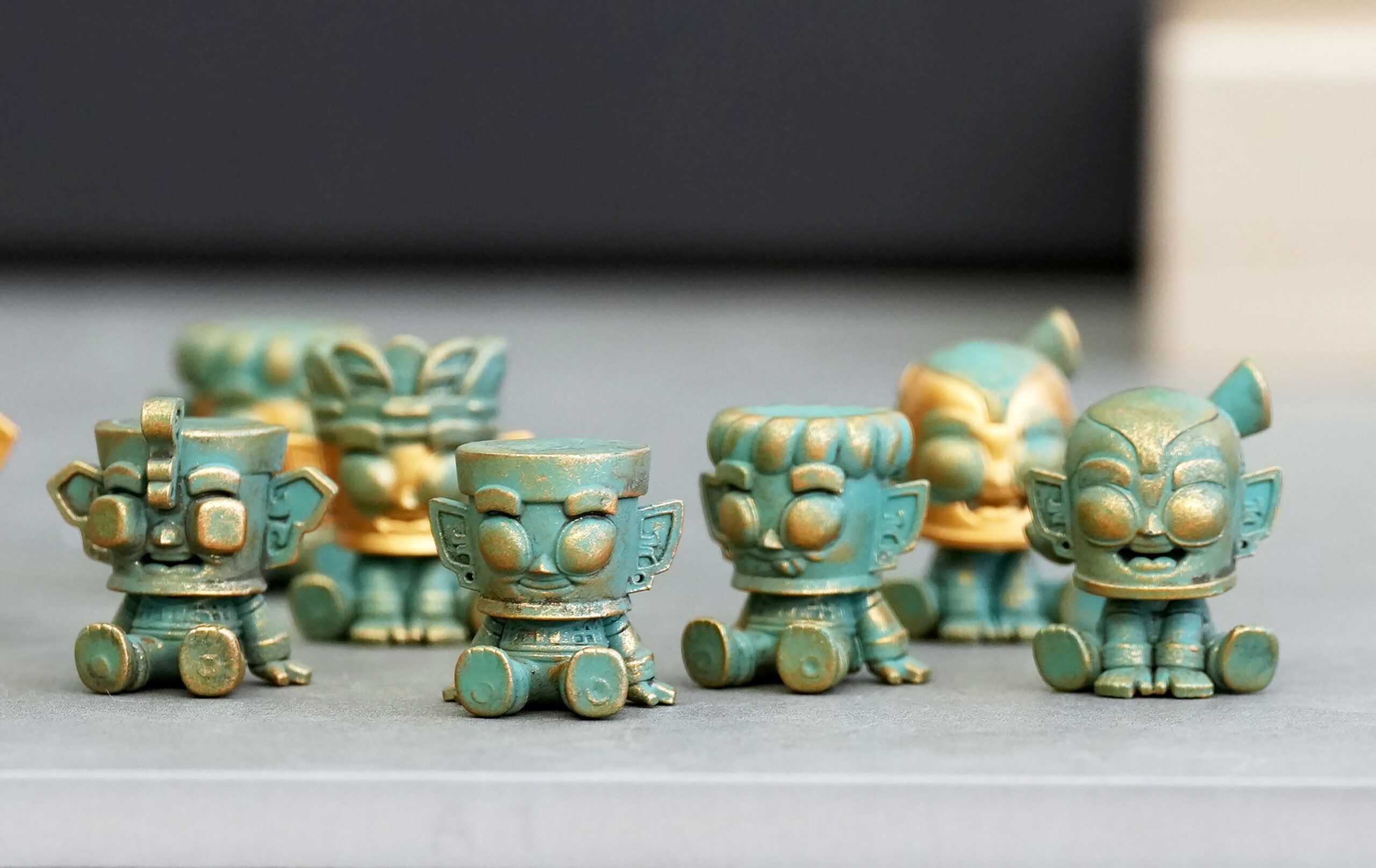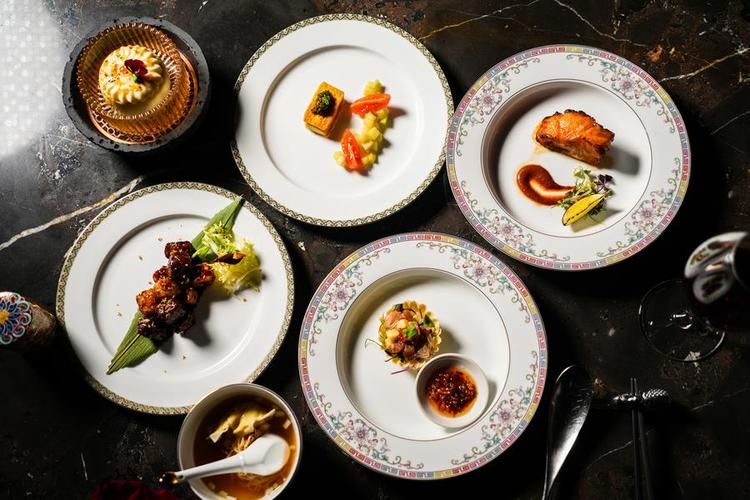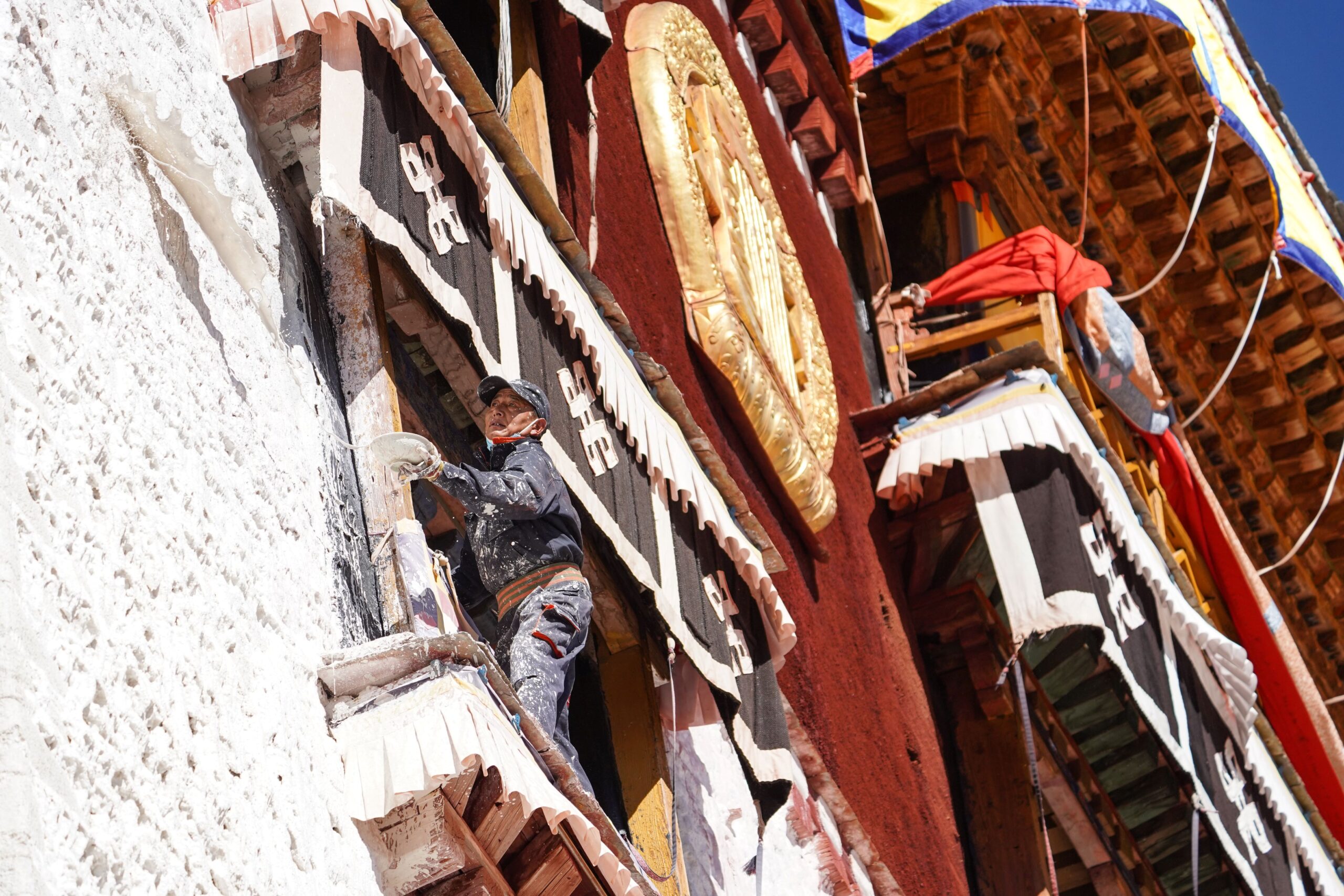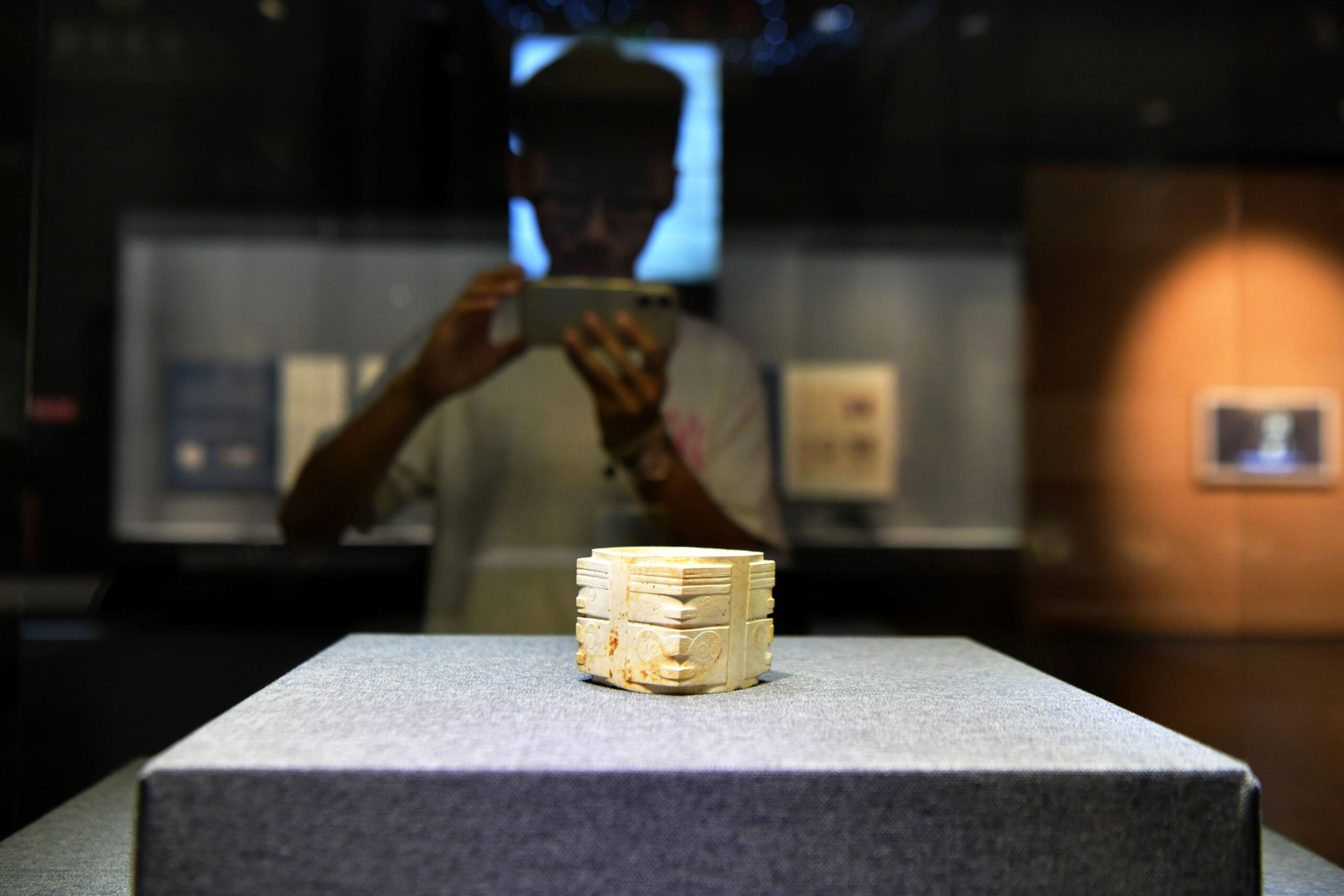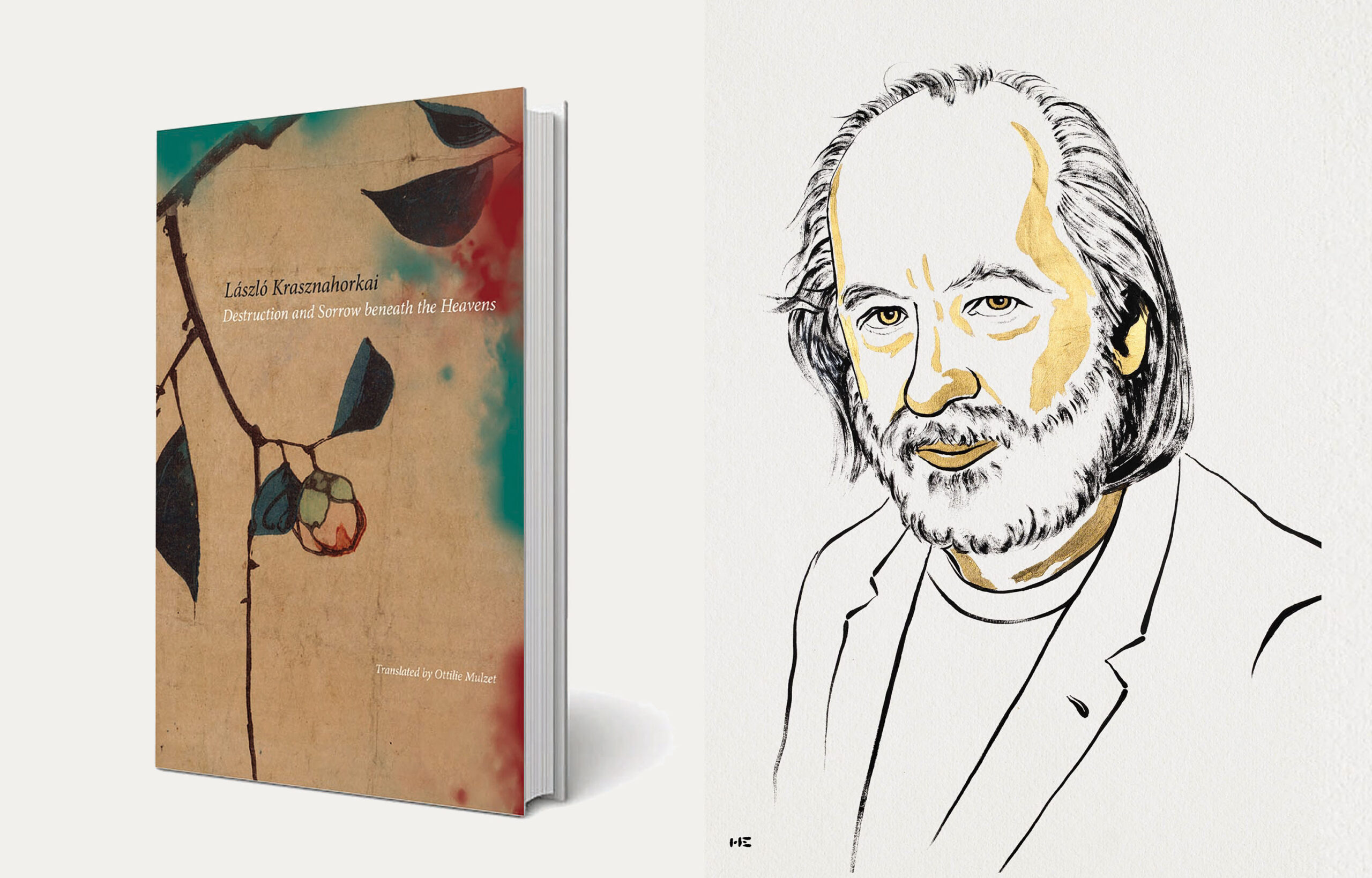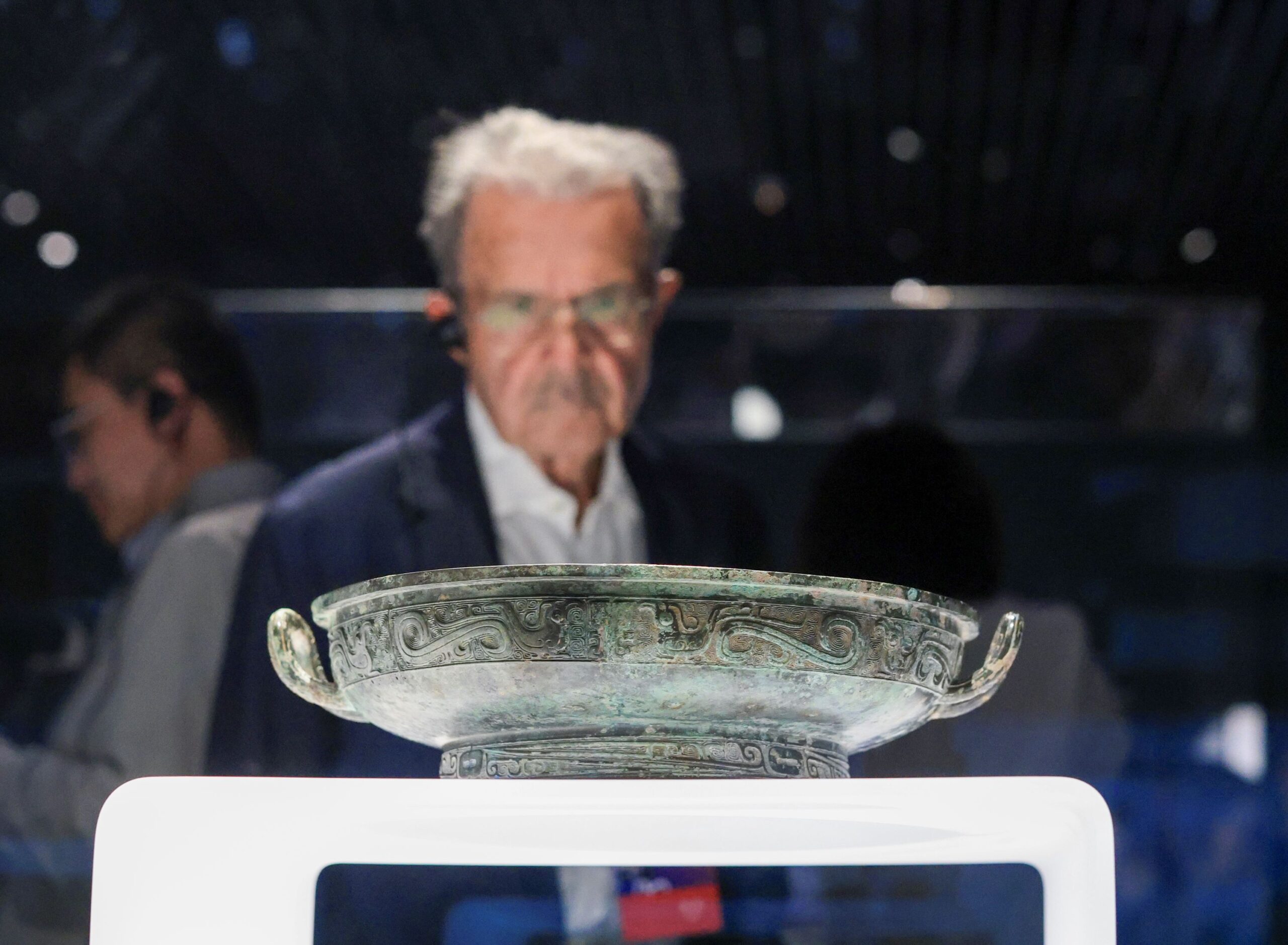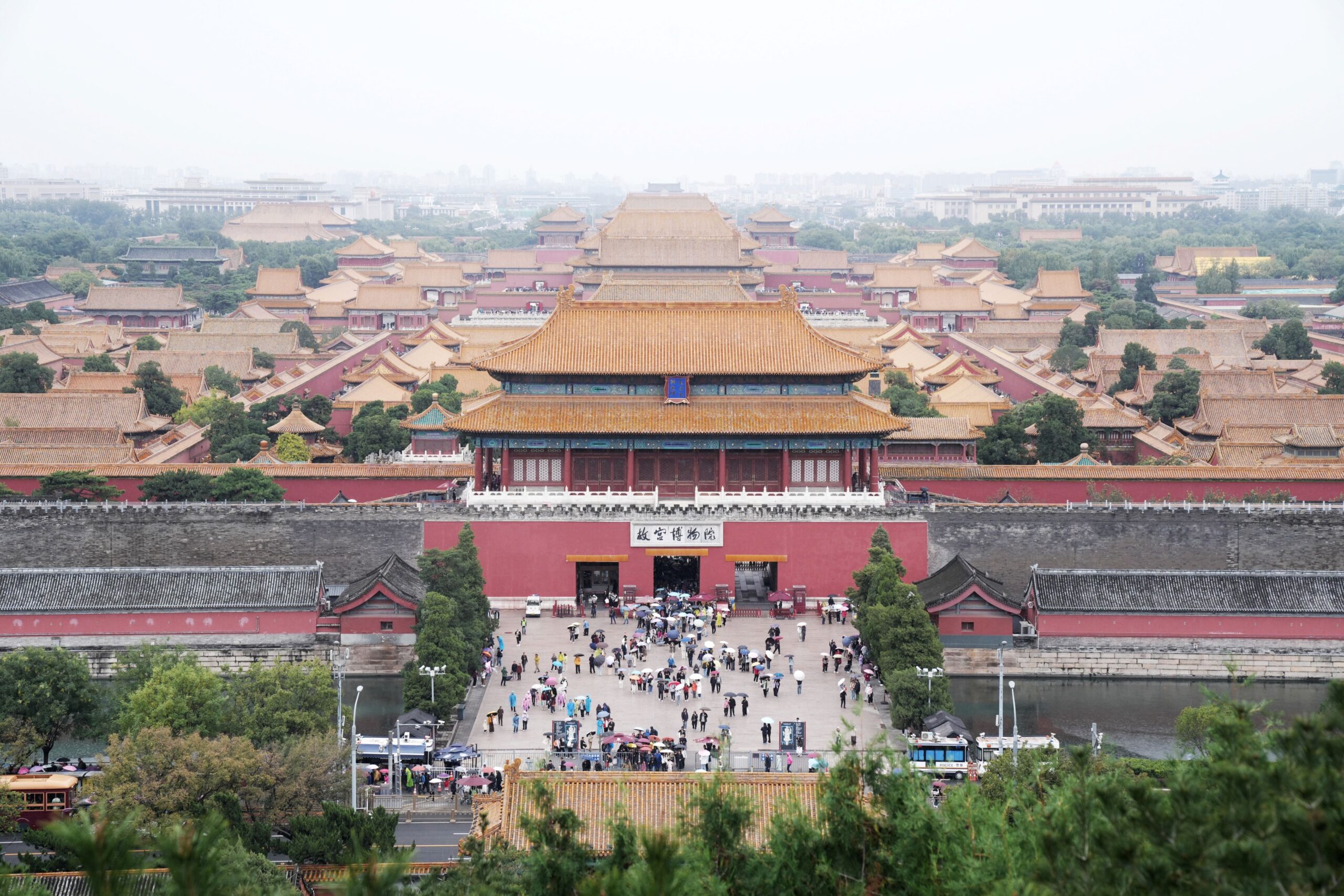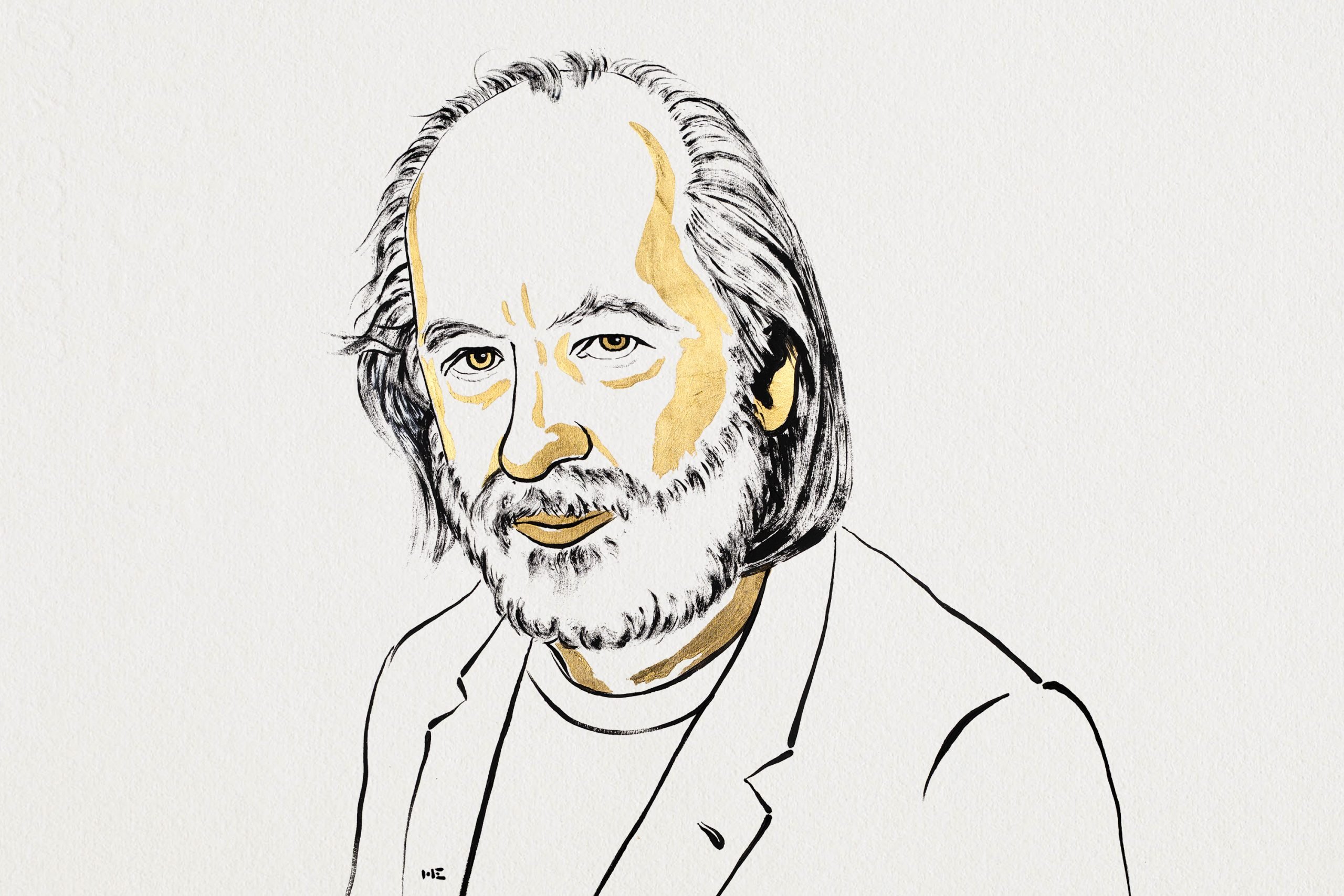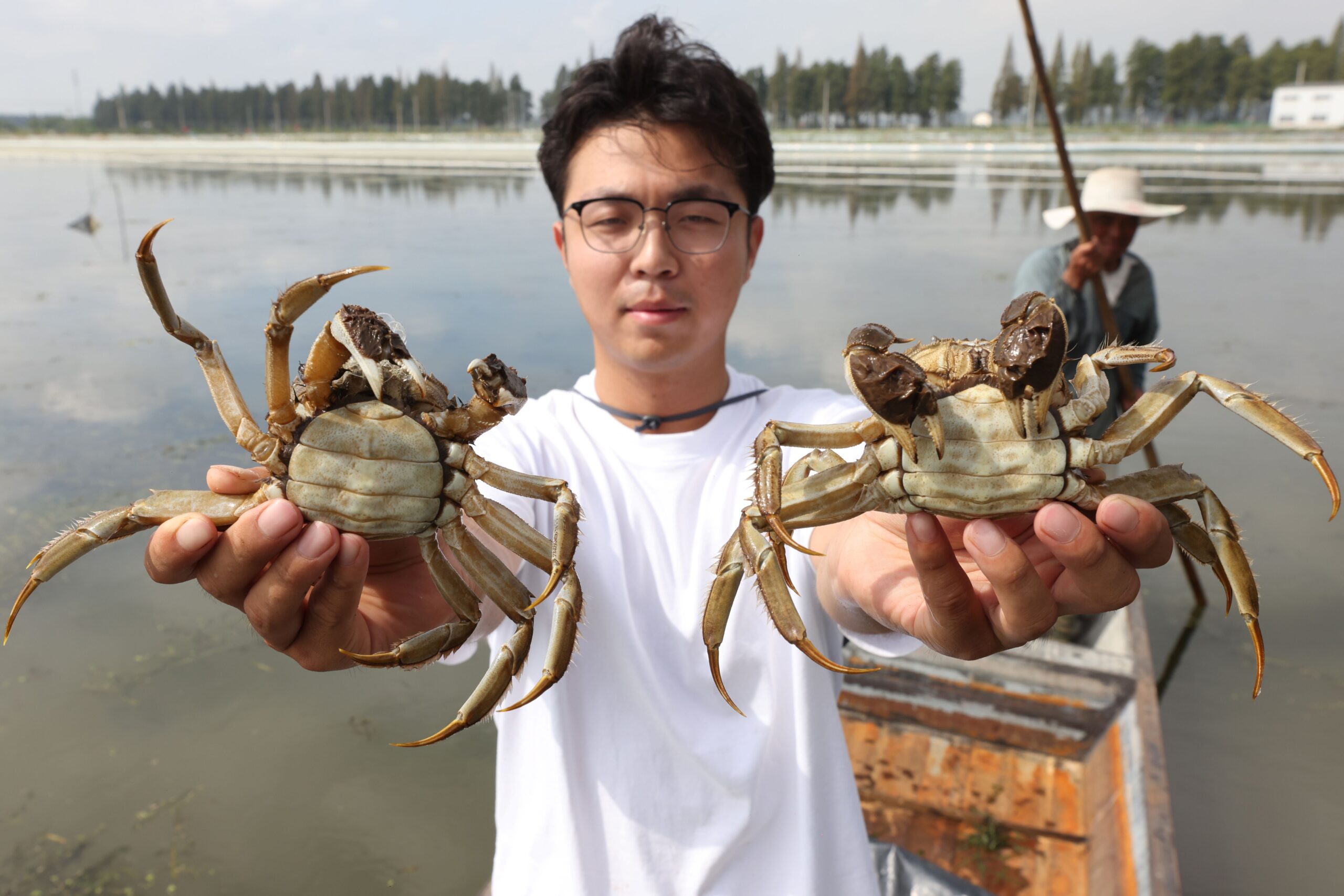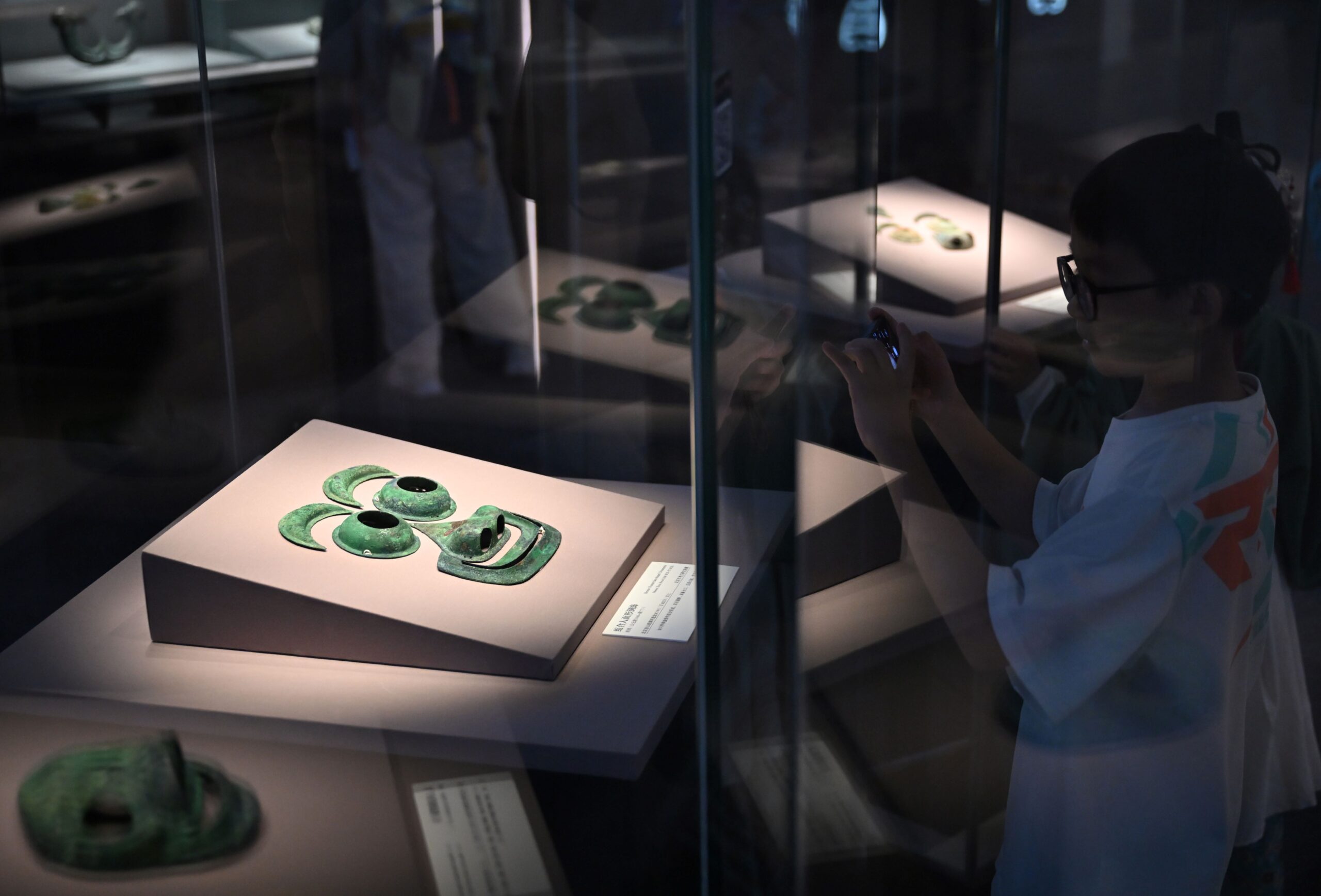Explore the mysterious Sanxingdui civilisation as its 3,000-year-old artefacts, including bronze masks and gold faces, prepare for their first overseas exhibition.
Sanxingdui Museum Deputy Director Yu Jian recently announced plans to host an overseas exhibition featuring Sanxingdui artefacts by the end of 2026. This will mark the first large-scale display of treasures from the 3,000-year-old Shu civilisation outside of China.
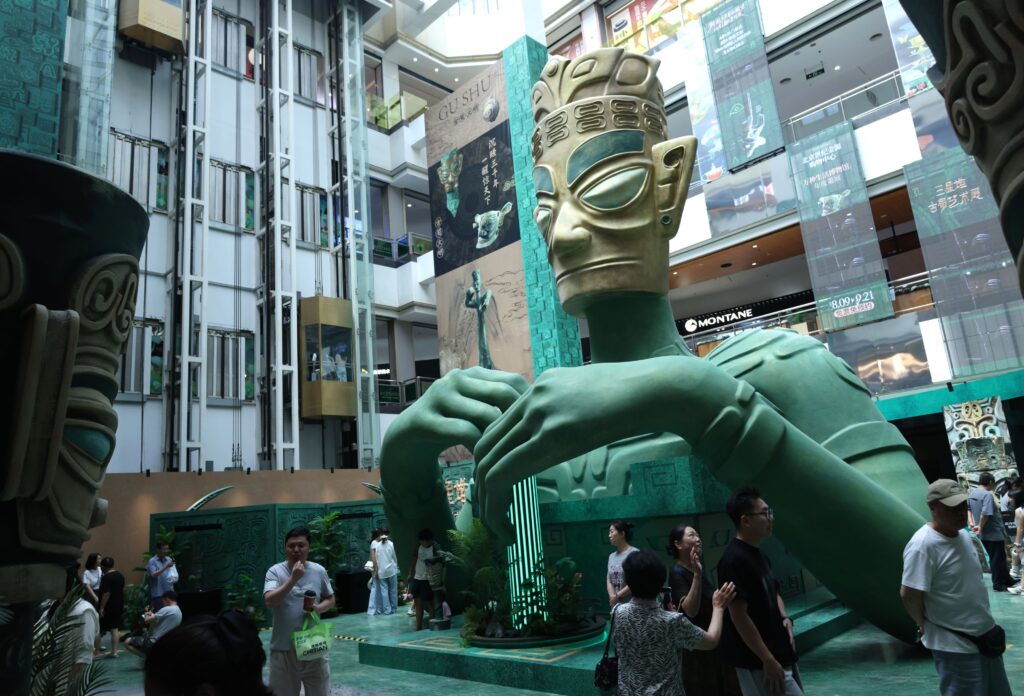
The World’s Mysterious Civilisation
Sanxingdui, located in Guanghan, Sichuan, is one of the most important archaeological discoveries in the 20th century. Since large-scale excavations began in the 1980s, archaeologists have unearthed more than 17,000 artefacts. Giant bronze masks, gold-faced statues, and bronze trees have amazed scholars with their size and craftsmanship. Some even jokingly call them evidence of “ancient alien visitors.”
In the latest excavation, archaeologists have cleaned and restored over 4,000 pieces of bronze, gold, jade, and ivory artefacts. These findings help fill gaps in the history of the ancient Shu civilisation and shed new light on the diversity of ancient Chinese culture.
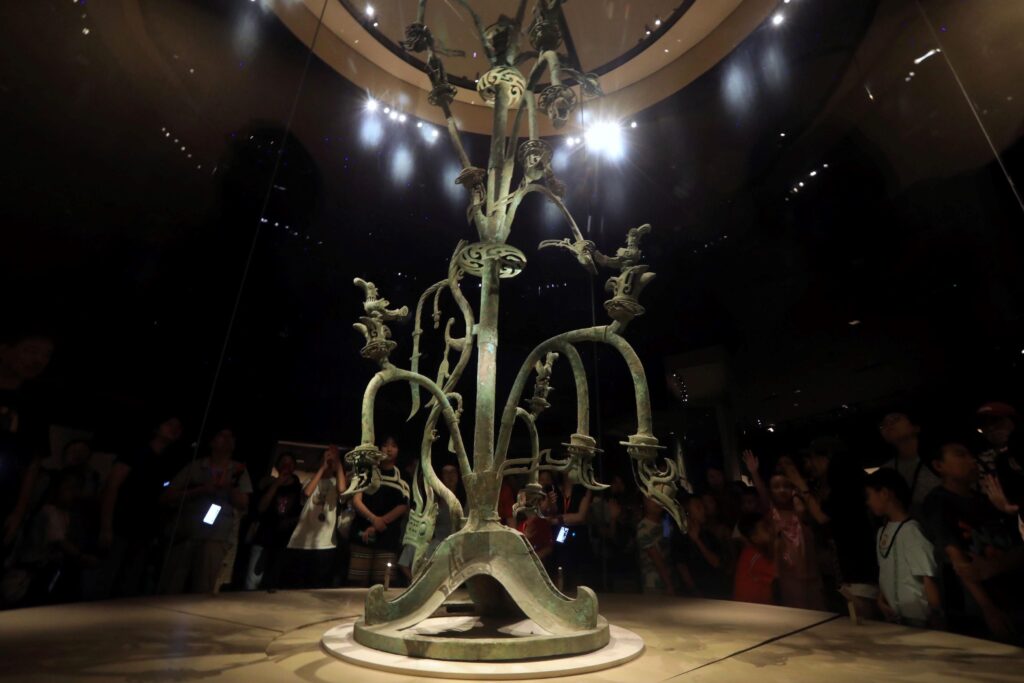
From Guanghan to the World
Sanxingdui Museum has been exploring “cross-civilisation dialogues.” In July, it hosted a Greek artefact exhibition, creating a playful “gold-faced twin” effect with Sanxingdui artefacts. Yu Jian said the museum also plans to collaborate with Egypt, France, and other countries to display artefacts side by side. This will allow visitors to compare cultures from the same era.
“We want the world to see what makes the ancient Shu civilisation unique,” Yu said. “And we want to show that civilisations can share similarities across time and space.”
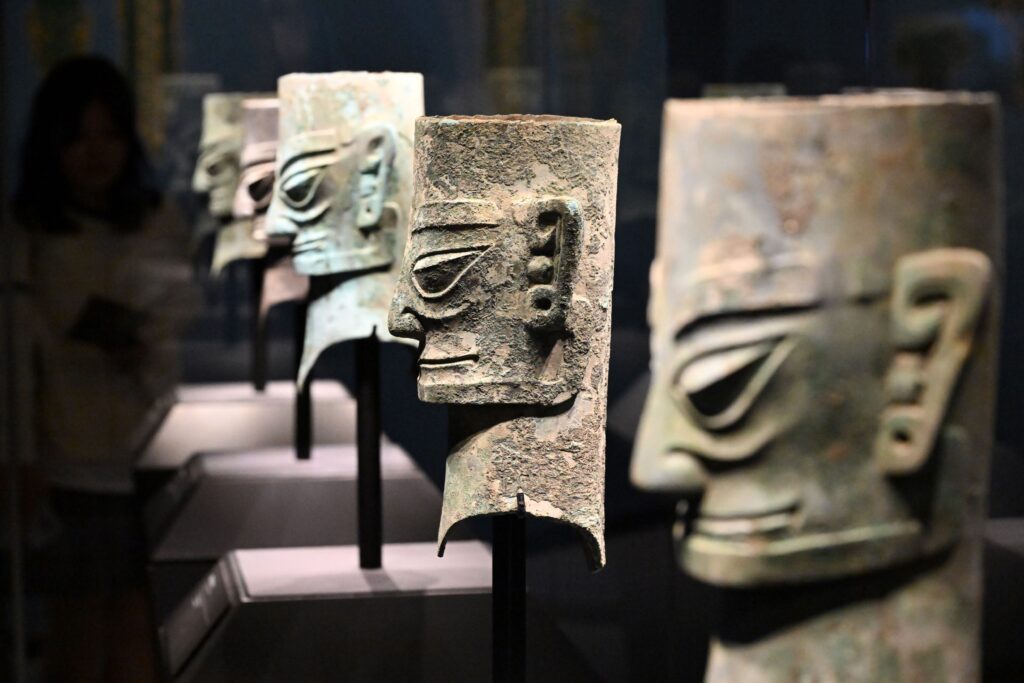
Young People & Cultural Buzz
Sanxingdui’s popularity goes beyond archaeology. Young visitors flock to the museum’s gift shop, which sells classic items like bronze trees, gold masks, and bronze statues. It also offers playful creations: bronze figures playing mahjong, bronze faces wearing armour, and even “Mona Lisa meets Guanghan.” These designs make the artefacts feel alive and fun.
The museum’s cultural products now generate more than 200 million RMB (around £20.9 million) in annual sales. In 2024, the museum welcomed over 6 million visitors, setting a new record. Night-time openings, immersive activities, and cross-brand collaborations have helped museums across China attract visitors and boost the “cultural economy.”
As Sanxingdui prepares for its overseas exhibition, these mysterious bronze faces may soon appear in London, Paris, or New York. How will global audiences interpret the imagination of the ancient Shu people? Sanxingdui leaves not only traces of history but also a cultural puzzle waiting for the world to explore.
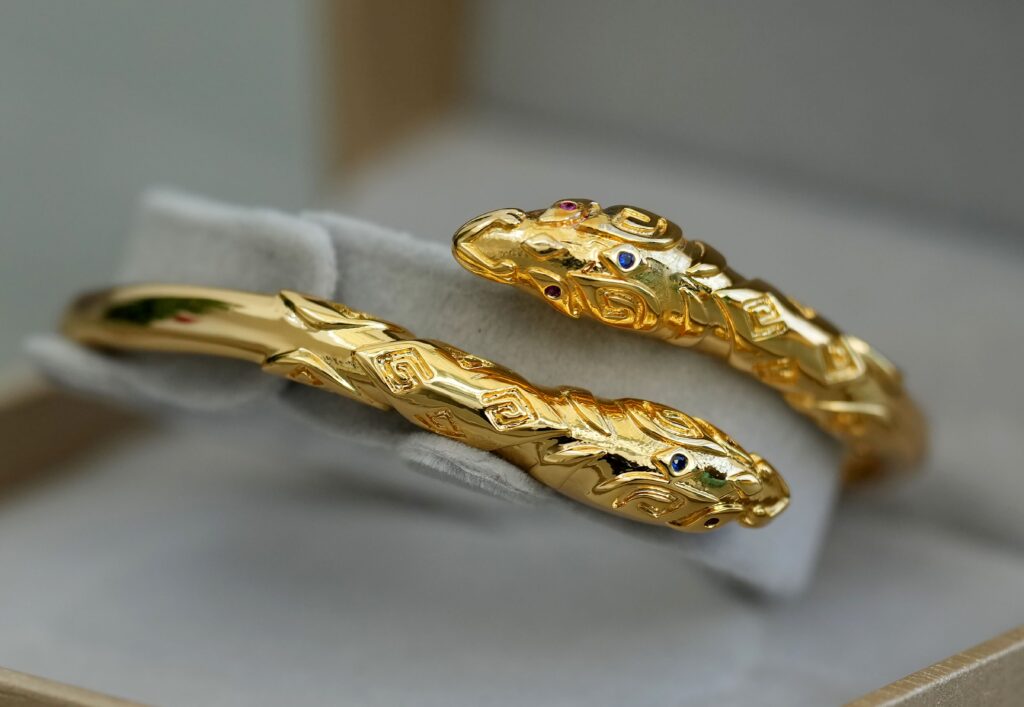
Written by Chen Wang, Additional reporting by HKCNA.
If you liked this article, why not read: Liulihe Site: The Origins of Beijing

